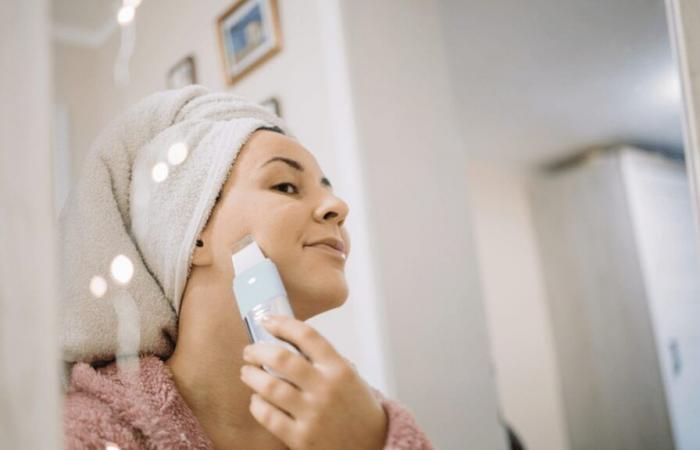Gadgets intended to clean the skin have recently proliferated in stores and on social networks. But are they really effective? Here is the opinion of dermatologists.
Written on 26/11/2024
The Health Mag – France 5
Vibrating spatulas, cleansing brushes, konjac sponges… All these accessories praised on social networks for their effect on the skin are not equal. Some are even not recommended by dermatologists. Overview of gadgets to adopt (or not) in your skincare routine.
Also read: Our tips for maintaining beautiful skin at the start of the school year
Vibrating spatulas: a gadget to avoid
Very popular on TikTok and Instagram, vibrating spatulas are marketed on the promise of deep cleansing of the skin by “scraping off” impurities. These devices, which cost around 30 euros, use vibrations to remove dirt and dead skin from the face.
Dermatologists do not like these spatulas very much, because they are quite traumatic for the skin. Of course, they remove all the small dead skin but according to Doctor Laurence Netter, dermatologist, there is a risk of creating micro-cuts on the skin and developing red spots or small cysts on the skin.
Are electric cleansing brushes recommended?
Inspired by electric toothbrushes, electric cleaning brushes allow deep cleaning thanks to vibrating silicone bristles or bristles. Their price varies from 30 to more than 200 euros. In the shower, simply place the facial cleanser on the brush and turn it on. The brush begins to rotate and vibrate and, without rubbing, it makes it easier to remove dead skin and remove dust and perspiration debris.
Doctor Nina Ross, dermatologist, confirms the potential benefits of these brushes, which effectively cleanse the skin in depth, a bit like a scrub. On the other hand, she specifies that these brushes are quite irritating for sensitive skin. The specialist therefore advises not to use this type of brush if you suffer from eczema, psoriasis or rosacea, because they are too abrasive and risk aggravating these skin problems.
Are facial sponges healthy for the skin?
Inspired by Korean and Japanese beauty rituals, these sponges are made from the roots of a plant, konjac, and have been available for around ten years on the shelves of specialized stores. Economical and ecological, these sponges are sold between 5 and 10 euros. To use this sponge, moisturize it so that it becomes supple and provides a slight exfoliating effect.
The advantage of konjac sponges: thanks to small reliefs on their surface, they will more easily remove impurities accumulated during the day. Like a washcloth! Moreover, like washcloths, konjac sponges can quickly become veritable breeding grounds for bacteria. These then risk being deposited on the skin and causing rashes.
That’s why dermatologists recommend cleaning sponges with soap after each use or soaking them in boiling water to kill bacteria. Also remember to dry them well: they are often sold with a small cord to hang them!






